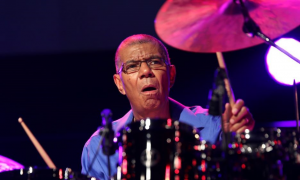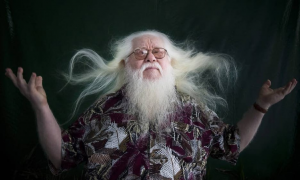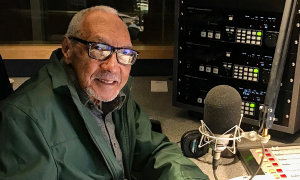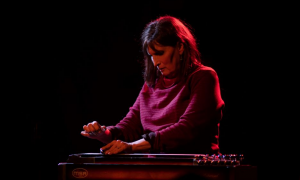Home » Jazz Articles » Big Band in the Sky » Wayne Shorter remembered as Jazz's Shaman Of Musical Influence
Wayne Shorter remembered as Jazz's Shaman Of Musical Influence
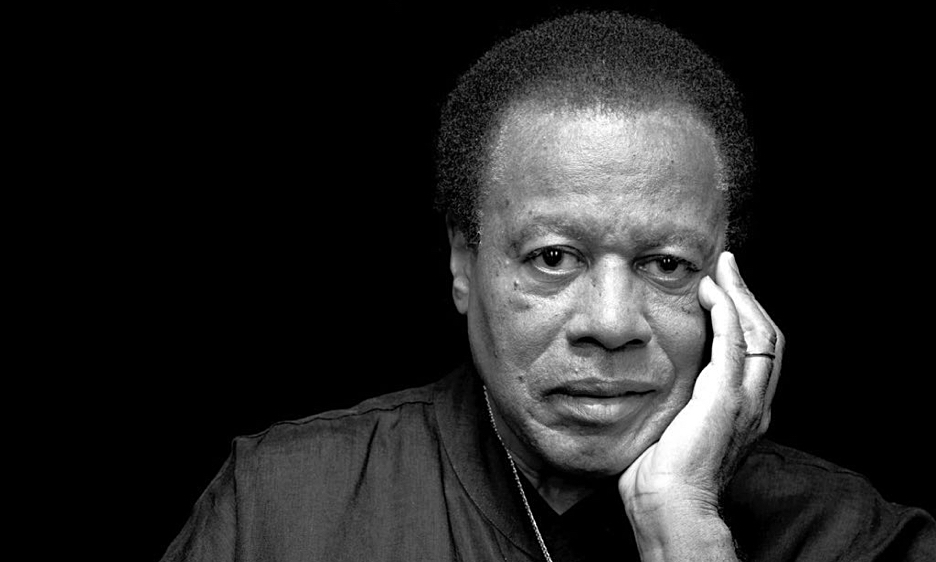
As a child growing up in the inner industrial city of Newark N.J. in the 1930's, Shorter showed early signs of artistic creativity which was encouraged by his parents. By his own account, he and his brother were devouring all the comic books available to them and drawing the action heroes. At 12 he would be surprised by winning an art contest that would lead to enrollment in the Newark Arts High School. An outlet was already taking root for Shorter's self-expression and finding early direction.
Moving forward in the narrative of his artistic life, Shorter would have an epiphany that would spark a new direction that would become his life's passion. At 15, in 1948 Shorter would experience a life-changing event when he saw Lester Young at Norman Granz Jazz at the Philharmonic show in Newark, N.J. along with Stan Kenton, Dizzy Gillespie, Charlie Parker and Russell Jacquet ("Illinois" Jacquet). As excerpted from All About Jazz's biography page, Shorter reflected, "I remember seeing Lester Young when I was 15 years old. It was a Norman Granz Jazz at the Philharmonic show in Newark and he was late coming to the theater. Me and a couple of other guys were waiting out front of the Adams Theater... got into the mezzanine and saw that whole show—Stan Kenton and Dizzy Gillespie bands together on stage doing 'Peanut Vendor,' Charlie Parker with strings doing 'Laura' and stuff like that. And Russell Jacquet... Illinois Jacquet. He was there doing his thing. That whole scene impressed me so much that I just decided, 'Hey, man, let me get a clarinet.' So I got one when I was 16, and that's when I started music." Deciding then to enroll in New York University, studying music, the clarinet would be his first horn instrument, graduating with a degree in music in 1956.
Shorter started out playing gigs with the Nat Phipps Orchestra in the mid-'50s and quickly became well known throughout jazz circles in New York City, earning the nickname The Newark Flash "for his speed and facility on the tenor saxophone."
After leaving the US Army in '59, he had a remarkable early connection with the primary post-Parker, legendary figures on tenor and soprano saxophone, John Coltrane and Sonny Rollins. Shorter's jamming sessions, at the highest level of intensity and demands by Coltrane and Rollins, would provide a hands-on foundation for performance, composition, and improvisation. He also played briefly with Horace Silver and Maynard Ferguson during this period.
His most formative, early-career opportunity came as an immersion into the quintessential hard bop ensemble led by drummer Art Blakey, where he stayed for four years. A maturing experience for Shorter as a performer, as well as a composer, as he would eventually become the musical director and produce a core collection of original pieces utilizing an extraordinary band of young musicians. In addition to his compositions such as "Free for All," "Hammerhead," "Indestructible," and "One by One," he was also being recognized for his playing, hailed by critics "as one of the most gifted of the young saxophonists."
At this same time, a very young Herbie Hancock was absorbing all the musical information he could about modern jazz and came upon some Blakey-period compositions and solos by Shorter, and was astounded by the level of experimentation. "He (Shorter) was right on the edge of something—taking chances all the time. Constantly inventing."
Shorter was also a dedicated student, listening to his bandleader and acknowledging Blakey's influential perspective on the contributing parts of an ensemble. In a 2018 Washington Post interview, Shorter stated that he learned to think of musical narrative as an act of collective storytelling. "Art Blakey would sit behind the drum kit and say, 'Tell me that story!'" he said, transporting himself into a nightclub, holding an invisible saxophone in his hands. "So, the narrative spreads throughout the group."
Shorter's next step would be historically significant, auditioning for the seminal reformation of an earlier quintet by Miles Davis, as he would join the Second Great Quintet in '64, to complete a lineup that would move jazz into a new genre and experimental direction. Shorter would become a part of a dynamic chemistry of musicians, handpicked by Davis, also featuring drummer Tony Williams, bassist Ron Carter, and pianist Herbie Hancock (who would also become a close lifelong friend).
Shorter later reflected on his audition and the moment he met Davis: "The first day I played with Miles, he called me to the Hollywood Bowl," Shorter said of his high-wire audition. "I walked into the dressing room and Miles said, 'You know my music?' I said, 'Yeah.' He said, 'Uh-oh.' "
The performance style of this band formation was often called by Davis, "straight, no change." As explained by music critic Richard Cook in his biography of Davis, (It's About That Time: Miles Davis On and Off Record), they were "incorporating elements of free jazz without completely surrendering to the approach. This allowed the five musicians to simultaneously contribute to the group as equals at times, rather than to always follow the established pattern of having the group leader and then the backing musicians perform unrelated solos." Shorter later stated, in Michelle Mercer's 2004 biography Footprints, "That is what freedom means."
Within this same period, Shorter's release Adam's Apple (Blue Note, 1966) assembled a new quartet, recording his classic signature piece "Footprints," and establishing the beginning of a long-term relationship with jazz pianist Herbie Hancock while showing off an early maturity in melodic and rhythmic directions of the post-bop era. As reviewed by All Music critic Stacia Proefrock, "Shorter has already arrived at the peak of his powers... Taken in isolation, this is one of the great works of mid-'60s jazz."
Compositionally, with Davis' quintet until 1970, Shorter would generate established classics in modern jazz, foundational yardsticks that remain on the set list of contemporary jazz bands today, regularly performed, and new renditions recorded. This unique combination of talent, in this formative quintet, generated some of the most well-known jazz of the 20th century, with Shorter composing many of the group's sturdiest songs, including "E.S.P.," "Footprints," "Nefertiti," "Pinocchio," "Sanctuary," "Fall," and several others. At this time, Shorter also infamously coined the signature description of Davis: Prince of Darkness.
With the breakup of the quintet, Davis broke to jazz fusion in 1970 as an unofficial leader in this new genre via the seminal album Bitches Brew. Shorter coalesced with current Davis sidemen John McLaughlin (guitar) and Chick Corea (piano), with musicianship establishing a high-octane hybrid of rock rhythm and jazz chordal synergy.
At this point in his musical career, Shorter would transition from tenor to soprano saxophone, playing the soprano on the Davis album In a Silent Way (Columbia, 1969) and on his own Super Nova (Blue Note, 1969) again with sidemen Chick Corea and John McLaughlin, future leaders of two of the most dynamic and impactful bands of the jazz fusion period, Return to Forever and the Mahavishnu Orchestra, respectively. But most importantly, from a current evolving musical direction, he had developed a relationship with post-bop minimalist electric pianist Joe Zawinul, who was also in the Davis lineup for this series of recordings.
Shorter and Zawinul (along with original bassist Miroslav Vitous) would merge their musical orbits to form a highly developmental/avant-garde jazz fusion quintet Weather Report, drawing on Zawinul's eclectic, sparse melodies and the synthesized sound of his electric piano, coupled with Shorter's restrained and economical approach with a now legendary tone and style on the soprano saxophone. The two lead instruments were set against a backdrop of exceptional ever-changing drummers, and also Jaco Pastorius' later domination with the fretless electric bass, setting the driving pulse of the band. As primary composer and unofficial leader of the band, Zawinul's melodic improvisations, layers and invented electronic affects and sound, would be countered when Shorter would step in with leads that were sparse and subtle, choosing a more free jazz approach.
From 1970 to 1986, with many changes in lineup, Weather Report would produce several Grammy-Award nominated albums. The 1977 release Heavy Weather (Columbia, 1977) became the band's most successful recording, selling over 500,000 copies, driven in part by the chart-topping composition "Birdland," the band's biggest hit, propulsive and dance-able, highlighting Pastorius' singing bass lines and Zawinul's synthesized ensemble brass, moving from pop hit and to eventually becoming a jazz standard.
Their 1979 release ,8:30 (Columbia 1979), a double-album live recording of the Mr. Gone (Shorter's nickname) international tour, won that year's Grammy for Best Jazz Fusion Performance. The intensity and powerful chemistry of the superstar musicianship delivered recharged versions of some of Weather Report's better-known recordings as well as a selection of more obscure ones. A sample of some of the most subtle and sublime soprano notes from Shorter is found on the live performance of "Brown Street" (written by Zawinul), which builds to a crescendo with a sorrowful and then uplifting "singing" horn, overlaying Zawinul's floating synthesized melodic keyboard strokes. "On Orphan," his melancholy serenade on tenor against Zawinul's church organ refrain and children's chorus chant, is haunting, and then Shorter returns to a flurry of notes, bebop style, on "Sightseeing."
After leaving Weather Report in 1985, Shorter returned to solo projects, including the Brazilian-American influenced release Native Dancer (CBS, 1975), which came at a time when critics felt his career and recordings had gone downhill. This release became one of his bestselling solo albums and boasts an exceptional lineup, including Herbie Hancock on acoustic piano and electric keyboards, renowned Brazilian singer Milton Nascimento, and percussionist Airto Moreira. The album was enthusiastically reviewed by Alex Henderson of All Music as a Brazilian-oriented jazz-fusion masterpiece: "Everything on this melodic, consistently lyrical effort is a jewel... clearly among Shorter's most essential albums."
In the early '80s, taking the opportunity to work with his closest friend and musical associate, Herbie Hancock, he recorded and toured with Hancock's hand-picked acoustic band, V.S.O.P., which reconnected him with Freddie Hubbard, Ron Carter, and Tony Williams as well. In 1992, this seasoned and intimate association of musicians, formerly of the Second Greatest Quintet, also produced an album, A Tribute to Miles, dedicated to their mentor and former bandleader Miles Davis.
Concurrently, there was an ongoing close collaboration with Canadian folk-rock icon Joni Mitchell, whose jazz direction had enlisted many top young jazz stars of the period including Jaco Pastorius and Pat Metheny with his musical partner Lyle Mays. From 1977 to 2002, Shorter appeared on ten of Mitchell's studio albums, gaining him a more diverse musical audience.
After a recording hiatus in the early '90s, he worked again with Hancock in 1997, and together they released the much-acclaimed album 1+1(Verve, 1997), which included a Grammy-award winning song "Aung San Suu Kyi" (named after the Burmese pro-democracy activist). This period would be an exceptionally traumatic time in Shorter's life, as he would lose his partner and wife Anna Marie in the ill-fated TWA flight to Paris in 1996, and then Tony Williams, his band mate from the Davis quintet days and other collaborations, would die suddenly at just 51.
Seeking a more spontaneous atmosphere, Hancock brought Shorter to his Laurel Canyon home, where his small recording studio was located. Shorter reflects, "there was no preparation at all before starting to record." An intimate musical relationship between Hancock and Shorter, already towering giants in their influence and impact jazz-wise, produced a complexity of harmonies and a rich instrumental sound that circumstance allowed within this jazz duet of two brilliant musicians.
In 2000, Shorter would team up with an exceptional acoustic quartet composed of pianist Danilo Pérez, bassist John Patitucci, and drummer Brian Blade,—so named the Wayne Shorter Quartet. All three of these musicians are virtuosos on their instrument and have extraordinary resumes as bandleaders, composers, mentors, academic directors and teachers. With four albums released, all of them live recordings, they provide an opportunity for an entirely different generation of jazz listeners to appreciate the artistry of Shorter, working with a more youthful interpretation and instrumental retakes of many of his classic compositions. There still remains an edginess and "free jazz" spirit to these live concert recordings, whereby Shorter laid down a simple melody on the soprano saxophone and let the younger guns pass it around for musical interpretation.
Anyone who was fortunate enough to see this quartet perform during this period found an audience fully engaged in the complexity of these pieces and the intensity of the solo exchanges between the musicians, delivering on Shorter's standards. The albums from these quartet performances are Footprints Live! (rec. live 2001), Beyond the Sound Barrier (rec. live 2002-2004, rel. 2005); Without A Net (rec. live 2010, rel. 2013), and Emanon (2018).
In 2018, Shorter retired from a 70-year performing career due to health reasons.
As a final challenge, with failing health concerns, Shorter would connect with Esperanza Spalding, the four-time Grammy-Award winner, acclaimed virtuoso jazz bassist, vocalist and composer, and currently Professor at Harvard. Her pursuit to collaborate with Shorter on the production of an opera only yet in conceptual form that Shorter had been thinking about since he was a 19-year old, titled Iphigenia was a dream yet fulfilled. Seeing Shorter's medical condition, which was sapping his final energy for the project, they both stepped into high gear. As an update to the ancient Greek myth of Iphigenia, Spalding felt the personal and intense need to "make it happen" particularly with her life-long jazz and spiritual hero.
As stated in a New York Times article, November of 21,' Spalding heard the affirmation from Shorter, "I want to make real magic," he said. "No tricks, no gimmicks." Old friends and some members of Shorter's longtime quartet would add their support, whom he wrote parts for into the score as a "counterweight to the full orchestra." According to Spalding (who wrote the libretto), and close friends on the scene of the creation of the modern opera, under the stress of a limited window of time, Shorter "dosed up with inspiration, would rise at 3 a.m., wheel himself to his writing desk, and continue composing the music to Iphigenia by hand—with pen, Wite-Out and a ruler."
With an opening in Boston in November of '21 and several other performances scheduled in Washington, D.C., Berkley and finally Los Angeles, with a 28-piece pit chamber ensemble, the opera was well received for its scope, individuality and interpretation of this ancient myth. The Feb. 21, 2022 L.A. Times review stated "with luxurious vocal arrangements, it is not a jazz opera but a confident, commanding, full-blown American opera with jazz elements. For Spalding, the opera is not so much a modernization of enduring myth as a disruption of the power of myth, an emboldened empowering of the mythological Iphigenia."
In the course of his lifetime, Shorter has won numerous awards, including 11 Grammy Awards, the Miles Davis Award, an NEA Jazz Masters Award, an honorary Doctorate of Music from Berklee College of Music, and in 2018, he was awarded Kennedy Center Honors.
For biographical resources about Shorter's life, music, and philosophy (as a practicing Buddhist, along with his closest lifelong friend, Herbie Hancock) there is a biography by journalist Michelle Mercer entitled Footprints: The Life and Work of Wayne Shorter; a documentary film by producer/director Dorsay Alvani entitled Wayne Shorter: Zero Gravity (2015); and a related film produced by ARTE, directed by Guido Lukoschek, Wayne Shorter: The Language of the Unknown (2013).
Having influenced, by his instrument and compositions, an enormous range of jazz artists over his 89 years, he also will remain a highly respected free spirit in his view of music, its types of expression, and ultimately, from his perspective, how humanity is inseparable from it. In a telling quote from a 2013 NPR (WABE) interview, Shorter revealed his principle approach to this art form. "The six years I was with Miles, we never talked about music. We never had a rehearsal," Shorter said. "Jazz shouldn't have any mandates. Jazz is not supposed to be something that's required to sound like jazz. For me, the word 'jazz' means, 'I dare you.'"
"This music, it's dealing with the unexpected," Shorter added. "No one really knows how to deal with the unexpected. How do you rehearse the unknown?"
Tags
PREVIOUS / NEXT
Support All About Jazz
 All About Jazz has been a pillar of jazz since 1995, championing it as an art form and, more importantly, supporting the musicians who make it. Our enduring commitment has made "AAJ" one of the most culturally important websites of its kind, read by hundreds of thousands of fans, musicians and industry figures every month.
All About Jazz has been a pillar of jazz since 1995, championing it as an art form and, more importantly, supporting the musicians who make it. Our enduring commitment has made "AAJ" one of the most culturally important websites of its kind, read by hundreds of thousands of fans, musicians and industry figures every month.








